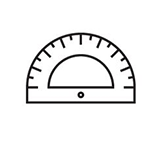아길리사우루스(Agilisaurus)
| 국내/해외배송 | |
|---|---|
| 배송비 방법 | 택배 |
| 배송비 | 4,000원 (50,000원 이상 구매 시 무료) |
| 수량 |
|
| 상품 정보 | 가격 | 삭제 |
|---|---|---|
| [총 상품금액(수량)] 0 (0개) | ||
- 학명 Scientific Name : Agilisaurus
- 형태 Mode : 골격화석 Skeleton
- 시대 Age : 후기쥐라기 Late Jurassic
- 크기 L×W×H (m) : 1m×0.2m×0.6m
- 원산지 Location : 중국 사천 Sichuan
Agilisaurus
Agilisaurus (pronounced /; 'agile lizard') is a genus of ornithischian dinosaur from the Middle Jurassic Period of what is now eastern Asia. The name is derived from the Latin agilis meaning 'agile' and the Greek sauros meaning 'lizard', and refers to the agility suggested by its lightweight skeleton and long legs. Its tibia (lower leg bone) was longer than its femur (upper leg bone), which indicates that it was an extremely fast bipedal runner, using its long tail for balance, although it may have been gotten down on all fours when browsing for food. It was a small herbivore, about 1.2 meters (4 feet) in length, and like all ornithischians, it had a beak-like structure on the ends of both upper and lower jaws to help it crop plant material.
There is one named species (A. louderbacki), named after Dr. George Louderback, an American geologist and the first to recognize dinosaur fossils from the Sichuan Province of China in 1915. Both genus and type species were named by Chinese paleontologist Peng Guangzhou in very brief fashion in 1990, then described in further detail by Peng in 1992.
A single complete skeleton of A. louderbacki is known to science, one of the most complete small ornithischian skeletons ever found. Only a few parts of its left forelimb and hindlimb are missing, and those can be reconstructed from their counterparts on the right side.
This skeleton was actually discovered during the construction of the Zigong Dinosaur Museum, in which it is now housed. This museum features many dinosaurs recovered from the famous Dashanpu Quarry outside the city of Zigong, in the Chinese province of Sichuan, including Agilisaurus, as well as Xuanhanosaurus, Shunosaurus, and Huayangosaurus. This quarry preserves sediment from the Lower Shaximiao Formation (sometimes called "Xiashaximiao") which ranges from the Bathonian through Callovian stages of the Middle Jurassic Period, or from about 168 to 161 million years ago.
Taxonomy
Despite its completeness, Agilisaurus has been placed in many different positions in the ornithischian family tree. It was originally placed in the family Fabrosauridae, which is no longer considered valid by most paleontologists (Peng 1990).
Several recent studies, including cladistic analyses, find Agilisaurus to be the most basal member of the group Euornithopoda, which includes all ornithopods more derived than the family Heterodontosauridae (Weishampel et al. 2003; Norman et al. 2004).
However, heterodontosaurs are not universally considered to be ornithopods and have been considered more closely related to the suborder Marginocephalia, which includes ceratopsians and pachycephalosaurs. In one recent cladistic analysis, Agilisaurus was found in a position basal to heterodontosaurs in the branch leading to Marginocephalia (Xu et al. 2006).
Agilisaurus has been recovered in other positions as well, including as an ornithischian basal to both ornithopods and marginocephalians (Barrett et al. 2005; Butler 2005).
Second Species?
In his more thorough 1992 description, Peng added a new species to the genus Agilisaurus. This species had previously been known as Yandusaurus multidens. Because this species did not belong in the genus Yandusaurus and due to similarities with A. louderbacki, it was assigned it the name Agilisaurus multidens.
Other scientists were not convinced that this species belonged to either Yandusaurus or Agilisaurus, and in 2005, it was once again reassigned, this time to its own newly-created genus. It is now known as Hexinlusaurus multidens (Barrett et al. 2005). Several studies agree that this species is slightly more derived than Agilisaurus (Norman et al. 2004; Barrett et al. 2005; Butler 2005). Both Yandusaurus and Hexinlusaurus were also found in the Dashanpu Quarry.
References
Barrett, P.M.,
Peng G. 1990. [A new small ornithopod (Agilisaurus louderbacki gen. et sp. nov.) from
Peng G. 1992. [Jurassic ornithopod Agilisaurus louderbacki (Ornithopoda: Fabrosauridae) from
Weishampel, D.B., Jianu, C.-M., Csiki, Z., & Norman, D.B. Osteology and phylogeny of Zalmoxes (n.g.), an unusual euornithopod dinosaur from the latest Cretaceous of Romania. Journal of Systematic Palaeontology 1: 65–123.
Xu X.,















 확대보기 및 상세정보
확대보기 및 상세정보